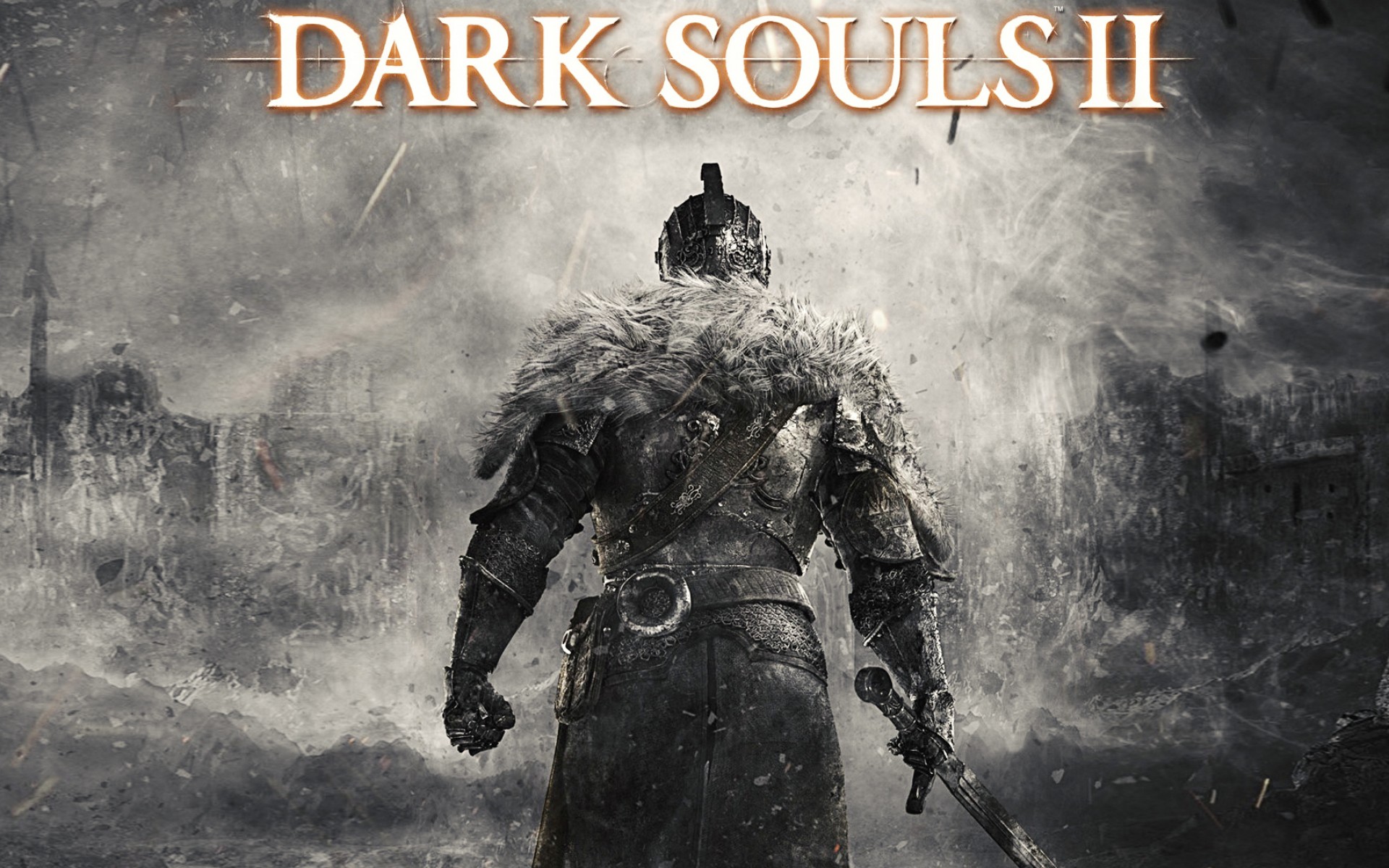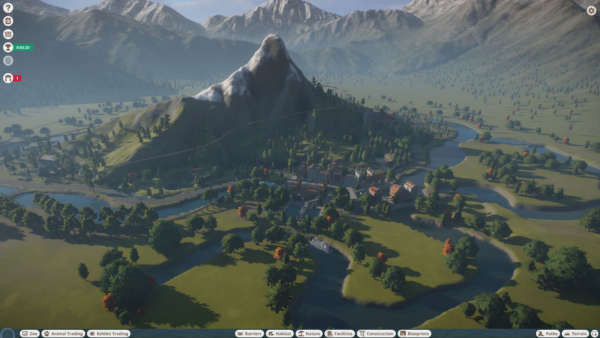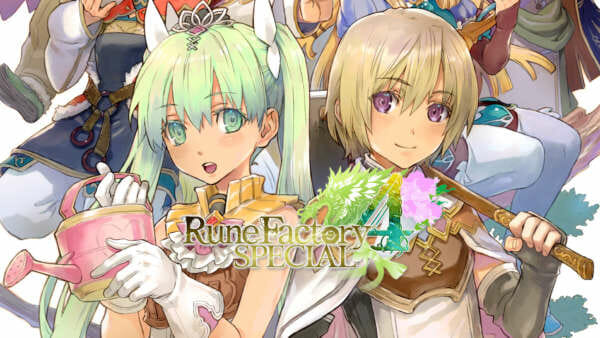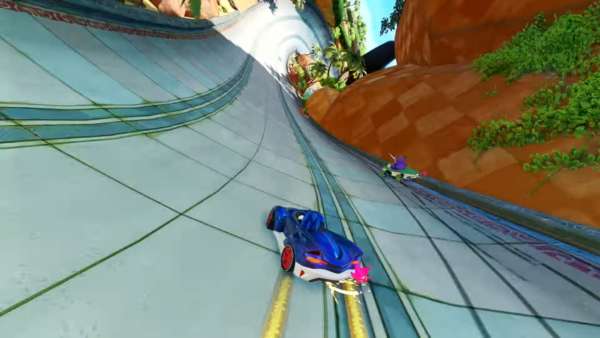While the rest of London was busy panicking over the lack of underground service, I had the pleasure of playing the opening hours of Dark Souls II at Namco Bandai UK headquarters. With a set amount of time to explore the first three areas, I sat down to expeience the lands of Drangleic.
You are one of the cursed, marked with the dark brand that plagued the lands of Lordran in the original Dark Souls. All those with the mark will rise once again as hollows and are drawn to the dragon-filled lands of Drangleic. After washing ashore the “Things Inbetwix”, a deep canyon bathed in pale blue light, you shortly come across a hut. Home to three old women, and one much younger, this is where you are able to name and customize your character, including their class. Your class denotes your starting equipment, as well as letting you choose from a handful of gifts. Some are obviously more useful, but, much like the original, some have much more vague uses. This is compounded by the descriptions remaining mostly useless until you select that item, which means that you could choose something that sounds great, then you start the game and find you choose a pebble from a selection of jewels.

Gizza Kiss Love
Upon leaving the hut, I found my first bonfire. Letting me light a torch, I used it to light the way to the rest of the canyon. A road ahead was the obvious route onwards, the obvious route however rarely has the best loot. Misty doorways lined the route, each leading to a small tutorial area. Littered with sconce’s, I used my torch to light up the area as much as possible before marching on. The tutorials were very hands-off, only giving brief tops on how to defeat some zombie-like swordsmen. My first death came from misjudging a leap of faith, with the controls changing it from tapping O, to the left stick. I plummeted into the bottomless deep, but thankfully regained my souls. They were useless at the moment, but no need to throw them away needlessly.
Wherever you go in Things Inbetwixt a low gurgling pervades. Where it comes from isn’t hard to spot. A large blueish-purple lump in some shallow water was easy to spot among the dark caves. Being cocky, I thought I could take it. I bravely leapt towards it, landing a blow to its leg. I barely scratched its health bar. It turns around, threw some awkward blows and fell on its own face. Not knowing how to get back to where I was, I chose to stay and fight. Then his buddy came along, belly-flopped onto me and my hollow died instantly. Whoops.
This is a theme that followed through the rest of the game that I played. Creatures that far out-ranked anything else the area housed. They may be optional, but when four snivelling lumps of flesh behind a house easily kill you, it feels a bit cheap. It may be a way to unearth secrets later in the game, but the first time around it feels a bit like roulette over what you are meant to fight, and what will turn you into a red stain in the floor.
Leaving the dark canyon, it opened into the shore-side village of Majula. In ruins, it is inhabited by a small number of people, the most interesting of which is a young women who gives you the much beloved Estus Flask, your primary source of health. With only one charge, that is renewed when rested at a bonfire, you need to be much more strategic when using it. Using Estus shards to increase its usefulness, these things aren’t found easily.

You Will Learn To Love This Woman
Majula is very similar to Demon’s Souls Nexus, a hub area that evolves as you progress. Once you find the key the black smith opens, you find a way into the mansion that dominates the northern edge of town, and an obelisk stands above it all, counting your deaths as you fail time after time. Much like the Nexus and the lady in black, Majula has the Emerald Herald, who levels you up for enough souls. Unlike the Nexus, or even firelink shrine, which were both dark and extremely depressing, Majula gives a faint sense of hope. The inhabitants hope for a way to break the curse, with a sweet melody playing over the constant sunset.
It isn’t a From Software game if you don’t die time and time again though, and moving into the final area, the Forest of the Fallen Giants, things took a step turn into soul-crushingly harsh. Enemies quickly outnumber you, they take full advantage of exposed weakness and are grouped together to both pressure you from range and up-close. Variety wasn’t great in the original Dark Souls, but here you will face human foes with access to a wider array of sharp pointy objects.
This is where what we expect from Dark Souls truly began. After fighting reanimated soldiers along a river, I was within a fortress of twisting rooms that took me through, under and over the fortification. There were side-routes, traps and more enemies to fight around every corner, and I would have had it no other way.

This Is Where The Nightmares Truly Begin
The difficulty level also takes a serious rise. Feeling as if it takes from the end of the original, and deciding to take it to the next extreme, Dark Souls II seems meticulously crafted when it places groups of enemy types that leave you with the worst footing. At times it can feel unfair, placing an archer out of range, or having an undead sitting on a rafter throwing bombs. While some would say that was the charm of From Software’s recent titles, it could seem a little overwhelming this time around.
This is worsened by an overhaul in how quickly weapons degrade. Instead of using the same rusty sword for hours without repair, now they can barely go twenty minutes before snapping in two. This would be a great way to force me to mix things up, but when weapons are so far apart, and weapons repairs are so prohibitively expensive, it feels like the game was kicking me while I was down.
Another interesting quirk was the power of the purchasable weapons. Originally, you really had to no reason to buy any sword or club an NPC had. Now, the most powerful weapon I could find was a simple wooden club, bought from a unsettling trader near a camp-fire. Doing nearly three times as much damage as my short-sword, it pummelled everything into a fine paste.

Want Me To Fix You Sword? That Will Be Your Eternal Soul Please
A final observation, and possibly the most important, is the increased importance of speed.. At first the increased time to take out an item and use it seems rather minor, but now, those extra few seconds it takes to grab a nip off the ol’Estus flask can be disastrous at the wrong moment. Not just that, but most healing items are no longer near instantaneous, instead slowing regenerating your health over a much longer period. Enemies are quicker to prey on weakness, and your blows seem tragically slow in comparison. Daggers seem like a more viable option than a sword, simply because you can hack away as they remain stun-locked.
This has far reaching consequences, and adds a new layer to strategy that wasn’t as prevalent as before. Exact timing, and perhaps a little luck, is needed to keep yourself alive. This fundamental shift in the pace of play made Dark Souls II seem like a whole new beast, while keeping a familiar air.
From the opening hours, Dark Souls II seems dead set to match the standards of the first. Minor changes on-top of a new land to slowly unravel keep it from feeling stale, but may end up annoying long-term fans. Packing in more loot, secrets, and death, Dark Souls II so far seems like a worthy successor to the Souls crown. We will have to wait until March however, to see if it takes it.




